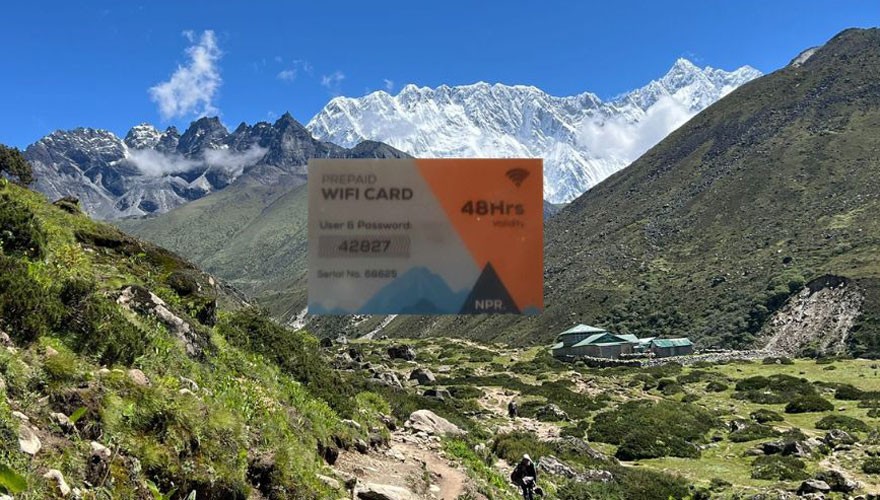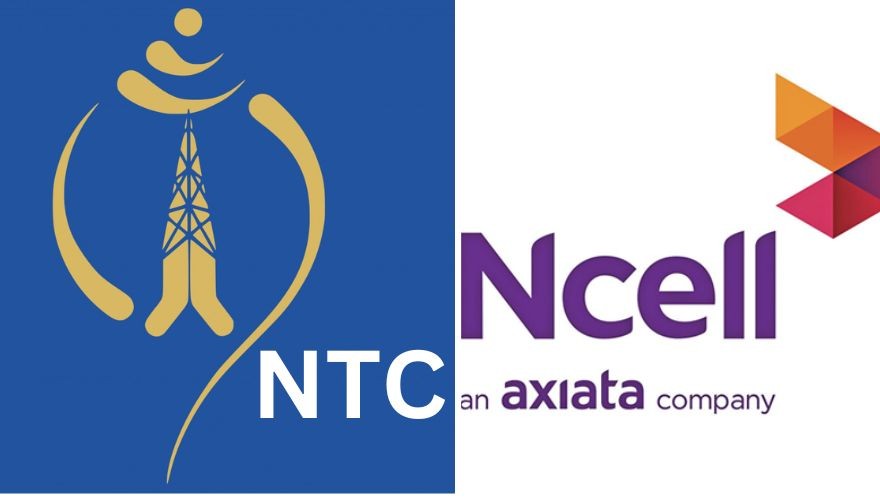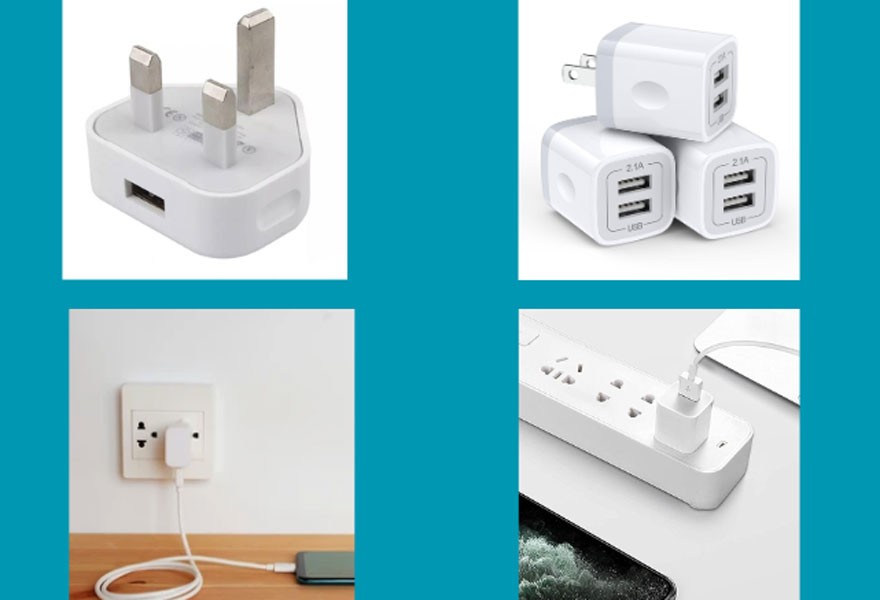
Trekking in Nepal
By Alpine

The Internet has become an essential part of our daily lives. No matter where you are or where you go, we desire to be connected with the world.
Be it contacting your family and friends because you are miles apart, just wanting to update that Instagram post, or even sending that last-minute email to your boss while you are trekking through the mountains; internet access comes in quite handy. But here we will talk about internet access or wifi access on the Everest Base Camp Trek.
Everest Base Camp Trek is one of the best trekking destinations in the world, and people have it on their bucket lists. If you are one of the people on the bucket list and are planning a trip to the Himalayas, then you might also be wondering if you will have a good connection to the network and internet. Or question: Is there WiFi on the Everest Base Camp Trek? The answer is yes.
You will not only be entering Sagarmatha National Park, which is a UNESCO World Heritage Site, but also the highest point on earth. Everest Base Camp, at an elevation of 5,364 m (17,598 ft), might be the highlight but the highest point of the trek is Kala Patthar, at an altitude of 5,644 m (18,519 ft) above sea level.
Being able to use the internet amidst some of the world’s highest mountains, such as Mt. Nuptse 1 Peak (7861 m), Mt. Everest (8848 m), Mt. Lhotse (8516 m), Mt. Ama Dablam (6856 m), and other snowy peaks, is truly a marvel of how far technology has come.
Of course, having access to the internet is important during a trek to Everest. But if you are someone who is planning for Everest or Nepal in general for the first time, then here are all the things you need to know.
Getting a SIM card ensures your connectivity, not only within the country but also outside the country. You can get the phone network and data pack that allows you to use the internet after recharging. But the question remains: which service provider do I choose?

There are two major service providers in Nepal: NTC and Ncell. The NTC is a government-owned cell service and the oldest one in Nepal, while Ncell is a part of Axiata Group Berhad, one of the leading telecommunications groups in Asia.
While both SIM cards have their own services and offers that are attractive to their customers, you need to choose the one that is suitable for you. In terms of speed and reliability, Ncell might have a bit of an advantage, but in terms of coverage, NTC is definitely ahead. For both, you can recharge a significant amount and buy data packages that let you use the internet.
Based on our own experience, we do recommend NTC, as it gives you more coverage and has more affordable plans.
After the step of choosing a SIM card is completed, all you need to do is buy one. For that, you will need the following documents:
If you are wondering where you can buy yourself a SIM card, one of the easiest places is the airport itself. You can find a shop in the airport and buy the SIM card, or you can get it once you have settled in at your hotel. There are many shops all around Kathmandu that sell SIM cards from both NTC and Ncell. Along with your SIM card, you will also get a new phone number, which allows you to make calls without the internet.
There are postpaid and prepaid plans for both SIM cards and you can choose the one that will be more beneficial to you. They will also allow you to get your own customized plans for data packs and caller packs at good deals. Also, look out for any special packages that the company might have started. You can buy internet data on an hourly plan, day plan, weekly plan, or monthly plan.
One might think having a wifi connection in the mountains is not possible, but with technology rapidly upgrading, it has become possible. The major wireless internet service provider in the Khumbu region is Everest Link. There are a few spots where you can enjoy free hotspots provided by a bakery or hotel but they are not reliable. Everest Link, however, is available in most parts of the trek.
The company has provided a recharge system for the internet. For a certain amount, you can buy an Everest Link Card at a certain Mbps and enjoy the internet. The wifi is unlimited and you can use it for the stated hour on the recharge card. The price of the Everest Link Card might change every season, but as of current data, the following are the prices:
Everest Link Card (10 MB for 24 hours): Rs. 800 (6 USD)
Everest Link Card (20 MB for 48 hours): Rs. 1300 (10 USD)
Even though you will have full access to the wifi, there is a possibility it might have a poor connection or slow running sometimes due to many people using it at the same time. But the best thing about this is that you can use the internet service even if you are doing the Gokyo Lakes Trek or even the Three Passes Trek.
Sometimes mobile data can be more reliable than the wifi service itself, but most of the time, when you are trekking in the high mountains, the connection is very poor or even lost at many points. However, one of the benefits of mobile data is that you can recharge a large amount at once, and that will last you the entire trip. As the network company offers weekly and monthly plans, you can subscribe to a weekly internet plan and use it for a week. You can freely use 3G internet service in places with good connectivity.
You can dial the following number to choose an internet plan for yourself:
For NTC: *1415#
For Ncell: *17123#
You will be trekking to one of the remote places in Nepal, so do not expect high-speed internet and a solid network connection. Some parts of the trekking trail might be better than others. Here is an overall demonstration of the availability of the network during the EBC Trek:
|
Place |
Mobile Network |
WIFI and Internet |
|
Lukla to Pangboche |
NTC and Ncell |
Everest Link and Mobile Data |
|
Dingboche to Lobuche |
No cell service |
Everest Link only |
|
Gorakshep |
NTC and Ncell (unreliable) |
Everest Link and Mobile Data |
|
Everest Base Camp |
NTC and NCell (unreliable) |
Mobile data is available, but there is no WIFI. |
The Khumbu region is a cold place all year round; the only difference is that it will be less cold during the summer, autumn, or spring but still cold nonetheless. While winter can be categorized as extreme cold, one of the downsides of trekking in a cold region is that the batteries of the electronic devices drain very fast.

So sometimes, even your power bank might not be enough. But you do not have to worry because you can charge your devices throughout the entire trek. Until Namche Bazaar, there is hydroelectricity, whereas above Namche Bazaar, you get access to solar-powered electricity.
However, you will have to pay to charge your devices. Here is a list of price ranges for charging your phone on the Everest Base Camp Trek.
|
Place |
Charge Amount (Rs) (Unlimited Charging) |
|
Lukla to Namche Bazaar |
Rs. 500 (4 USD) |
|
Tengboche to Gorakshep |
Rs. 1000 (8 USD) |
Overall, in Nepal, there are three types of associated plugs: types C, D, and M. Three round pins arranged in a triangle make up plug type D; two round pins make up plug type C; and three round pins make up plug type M.
Therefore, make sure to pack plugs that suit the sockets in Nepal for your device. Having a portable power bank and an adapter for charging your devices will definitely enhance your experience.
For the Gokyo Lakes Trek, there is little to no connection to mobile networks, which in turn means no mobile data internet either. But you will be easily connected to the Everest Link WiFi through the trails, including Gokyo, Dzongla, Dole, Machhermo, and Thangnak.
Similarly, on the Three Passes Trek, you cannot get a phone network connection or internet access, but you can easily access Everest Link. You can use the WiFi throughout the trekking trail, including the villages of Chhukung, Lungden, Thame, and Thamo, except for Marlung.
Therefore, for either of these treks, the best option is to buy an Everest Link Card because mobile networks and internet data packages are not reliable for the entire trek.
As everyone on the trek will be using the internet facility, the speed might get low or even not work at some times. Therefore, to avoid such situations, people are urged not to use WiFi beyond its bandwidth. Use the internet responsibly, and try to avoid streaming long videos, watching movies online, or uploading and downloading large files, which can result in slow internet for everyone. Making fair use is the best way to act responsibly.
Staying connected to the world sometimes isn’t a desire but a requirement because you need to reply to an email or be in a Zoom meeting, even if you are trekking the Everest Base Camp Trek. But you also need to stay connected to your family and friends to let them know how you are doing.
Therefore, the internet and WiFi have become an important part of people’s lives now. Therefore, even on such a remote trail as the Everest Base Camp Trek, you can now use the internet and stay connected.
You even have the option of choosing a local network with a SIM card, NTC, or Ncell or recharging WiFi with the Everest Link Card. Both options come with their own set of limitations, but they also work where it counts. But one does not trek to Everest Base. Camp for the good internet, so make sure to enjoy the mountains and culture that surround you, which is the most important thing.